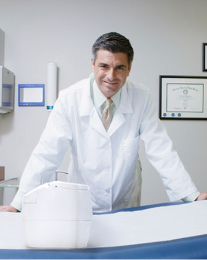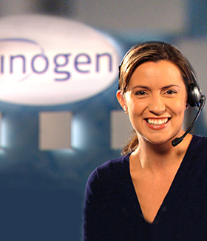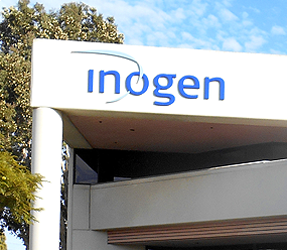Life is 10% what happens to you and 90% how you react to it.* This rings true when it comes to living with a lung disease that requires using supplemental oxygen. While getting used to using a small portable oxygen machine may take some adjustments, the advantages far outweigh any costs. Oxygen therapy provides many benefits, and now with portable oxygen concentrators, you can get the oxygen you need, reduced breathlessness and peace of mind when you are outside of your home and away from your stationary concentrator.
Benefits of Portable Oxygen Concentrators
There are so many benefits of portable oxygen concentrator (POC) use for lung disease, including:
BE MORE ACTIVE [1]
Oxygen therapy may help you become more active and get you back doing the activities you enjoy. Many people with lung disease use oxygen during exercise, to run errands, to do chores, and even when flying. There are ways to do just about everything you love while using oxygen. When your body has enough oxygen, you will have more energy to be more active. Staying active is a key part of staying as healthy as possible.
INCREASES SURVIVAL
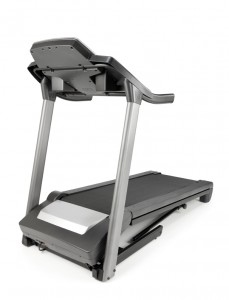
Supplemental oxygen, worn at least 15 hours a day, increases survival in some patients.[3] And today’s portable oxygen technology allows you to utilize portable oxygen therapy 24 hours a day, 7 days a week, all day, every day, at home or away.
Improves Exercise Tolerance
Many patients with breathing difficulties have poor exercise tolerance that dramatically limits their ability to exercise. Studies suggest that using oxygen during exercise improves exercise endurance, heightens exercise performance, and ultimately decreases the sensation of breathlessness.[4]
Improves Mental Alertness
Are you in a mental fog? When you’re not getting enough oxygen, every organ of your body is affected, including your brain. Confusion is the first sign that people with lung disease may not be getting enough oxygen.[3] Using supplemental oxygen keeps your brain, and all your other vital organs, healthy.
A Better Night’s Sleep
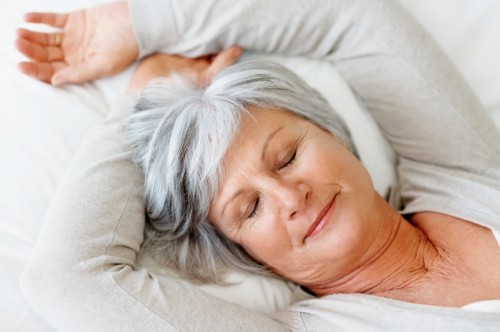
People with lung disease often have a hard time sleeping or don’t get very restful sleep. There are many reasons for this, but one is that people with lung disease lose oxygen in their blood overnight, especially during REM sleep. Using oxygen therapy at night allows your body to get more oxygen into the blood stream so that you may get a better night’s sleep.[1]
Increases Stamina
If you have little energy to get through the day, it may be because your oxygen levels are low. Oxygen therapy can circulate more oxygen into your bloodstream which can improve your energy levels to give you the stamina you need to carry out normal, everyday functions such as getting dressed, cleaning house, preparing a meal and taking the dog for a walk.[1]
The Inogen One Difference
Compressed oxygen is what most of us picture when we think about oxygen treatments. The tanks come in different sizes, but the smaller the tank, the less oxygen is in it. How much oxygen you need will determine the size of the tank your doctor prescribes. Some portable tanks are refillable by the patient, but some need to be returned to the oxygen supply company for refill. Gauges on the tank can be used to adjust the oxygen flow rate, which should be determined by your doctor.[1] Compressed oxygen tanks are large, awkward and heavy, making getting around with them quite difficult. Even if you are using a small portable oxygen tank, you have to worry about getting regular refills and potentially running out of oxygen before your next supply is delivered. [7] If you are using liquid oxygen, you will use a stationary unit and a portable device. Liquid oxygen is very cold and can cause frostbite or burns if it comes in direct contact with your skin. In addition, the liquid oxygen evaporates over time, so navigation of refills and delivery are still a necessary part of using liquid oxygen.[1]
A portable oxygen concentrator (POC) draws in air from your surroundings, removes nitrogen and other gasses and delivers purified oxygen to the user, like a stationary (home) concentrator), but it is much smaller and easier to take on the go. POCs are powered by being plugged into an outlet or using rechargeable batteries. POCs can deliver oxygen continuously (at a steady rate), but most POCs deliver oxygen through a pulse dose (in bursts). The burst of oxygen is delivered each time you inhale.[1] The Inogen One portable oxygen concentrator is designed for your on-the-go lifestyle. Because each of our Inogen One portable oxygen concentrator models are so lightweight, you can take it on a visit to a museum, stroll along the beach or dine with friends at your favorite restaurant. No need to worry about managing deliveries or tank replacement either, because with our portable oxygen machine you will never have to worry about running out of oxygen, as long as you have a charged battery or access to an AC or DC power source. The Inogen One is provides medical grade oxygen, all day, every day, at home or away. If you would like to learn more about the Inogen One, read our portable oxygen concentrator reviews.
Designed for Travel
Because of their compact size, POCs are easy to take on the go. Where you are able to bring your portable oxygen concentrator depends largely on the individual concentrator and whether it meets portable oxygen machine regulations.
Most portable oxygen concentrators have car chargers (either included or sold separately), so battery life is not an issue during car travel as long as the battery can be charged throughout the trip.
Amtrak allows passengers who use oxygen equipment (e.g., bottled oxygen, oxygen concentrators) to bring the equipment onboard Amtrak trains with certain restrictions. Because it is not possible to make reservations that include oxygen equipment on Amtrak.com, you must call 1-800-USA-RAIL (1-800-872-7245) to let Amtrak know of your need to bring oxygen equipment and to make your reservations in advance. Portable oxygen equipment must be able to operate for a minimum of four hours without available onboard electrical power (in the event of a power disruption onboard). Using the train’s power to charge your unit is acceptable. Oxygen equipment must be Underwriter’s Laboratory (UL) or Factory Mutual (FM) listed. And the total weight may not exceed 120 lbs (54 kg). While you are welcome to travel with any oxygen delivery system that meets these Amtrak train travel rules, as long as you have a medical need, using a lightweight portable oxygen machine may make it easier.[5]
Travelers who use supplemental oxygen are welcomed aboard most cruise ships as the ship will have amenities and electrical outlets. It is still important to notify the cruise company ahead of time, however, to make sure your POC meets any regulations they might have.
Air travel is naturally the most strict when it comes to what you can and cannot bring onboard now you can carry your own oxygen concentrator aboard all U.S. domestic flights and international flights beginning or ending in the United States, but your device must be approved by the Federal Aviation Administration. A seat with a power port may be requested by contacting the airline, but the use of that seat will always vary based on availability. If approved, most POCs are small enough to rest on one’s lap or on the floor of an airplane.[6]
One of the benefits of portable oxygen concentrators is that they are designed for use on the go.[7] Inogen’s portable oxygen machines meet FAA acceptance criteria for POCs used on board aircraft, so you can feel confident flying with any Inogen One portable model.
Whether you are traveling by bus, train, boat or airplane, it is always a good idea to let the company you are traveling with know that you will be using a portable oxygen concentrator onboard to ensure that you have access to the resources you need and are aware of any guidelines the company may have. To learn more about the benefits of portable oxygen concentrator use while traveling, or while at home, contact Inogen today.
* Charles R. Swindoll, author, educator, evangelist.
References
- https://www.lung.org/lung-health-diseases/lung-procedures-and-tests/oxygen-therapy/how-can-oxygen-help-me
- https://www.verywellhealth.com/the-benefits-of-oxygen-therapy-914838
- Stoller, James K. MD, MS, FCCP et. al. Oxygen Therapy for Patients With COPD: Current Evidence and the Long-Term Oxygen Treatment Trial. Chest. 2010 July; 138(1): 179–187. doi: 10.1378/chest.09-2555. PMCID: PMC2897694.
- Emtner, Margaret et. al. Benefits of Supplemental Oxygen in Exercise Training in Nonhypoxemic Chronic Obstructive Pulmonary Disease Patients. American Journal of Respiratory and Critical Care Medicine, Vol. 168, No. 9 (2003), pp. 1034- 1042. doi: 10.1164/rccm.200212-1525OC.
- https://www.amtrak.com/accessible-travel-oxygen-equipment
- “Acceptance Criteria for Portable Oxygen Concentrators Used On Board Aircraft.” Federal Register,FederalRegister.gov, 24 May 2016, www.federalregister.gov/documents/2016/05/24/2016-11918/acceptance-criteria-for-portable-oxygen-concentrators-used-on-board-aircraft
- Oxygen devices and delivery systems – PMC (nih.gov) https://www.ncbi.nlm.nih.gov/pmc/articles/PMC6876135/



